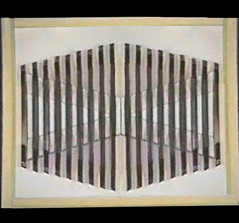Web Communication: "Sign - Sign - anywhere A Sign"
Your firm success depends on your potential to retell effectively to an curious audience. Driving thorough traffic to your site is important, but the tactics that create visitors are not the same tactics that get visitors to stay on your site.
Websites that consistently under perform and that don't meet firm expectations generally suffer because they are not designed to hold viewers concentration long sufficient to retell a clear concise marketing message.
Web-communication is a series of account for multi-sensory sign languages; signs being the words, images, Audio and videos that constitute the range of presentation vehicles that like all forms of transportation have their own grammar, context, and relevance as interpreted from personal caress by each member of your customer-audience.
When Words Lose Their Meaning
Marketing is one of those words that has lost its currency because it has been tossed about with puny respect for its meaning. To many, it's merely just other word for advertising, which of course it is not. To the more sophisticated it takes in all the disciplines of branding, positioning, identity, advertising, and more. Above all marketing implies a strategic advent to implementing these tactics.
For associates curious in using the Web to supplementary their firm objectives, Web-marketing is the execution of a transportation strategy through the creative implementation of multi-sensory signature presentations.
Semiotics: The Study of Signs
"Sign, Sign, everywhere a sign,
Blocking out the scenery breaking my mind,
Do this, don't do that, can't you read the sign."
- Five Man Electrical Band
Like the lyrics of the song, 'Signs,' by the Five Man Electrical Band' suggests, we are surrounded by signs, the interpretation of which creates our reality. The study of signs and how meaning is derived from them is called 'semiotics.'
We are bombarded by signs, not just images, but the words, voicing, gestures, posture, attire, and Movements of the messengers, as well as the music and sound effects that accompany the presentation; not to mention the chosen media itself.
Each of these elements is a language all its own. And like all forms of language if you don't learn the rules, the grammar and syntax, you can't retell coherently.
Fear of Meaning
Most firm transportation is shrouded in a haze of protective ambiguity caused by the fear of manufacture a decisive statement of who you are, and what you stand for. This kind of defensive reasoning may safe your firm from some criticism, but it also distances you from your real audience, citizen and businesses that could be responsive to what you have to offer.
Advertisements, videos, images and copy designed to not offend, will fail to retell meaning and if what you have to say is not meaningful, how can you expect your audience to respond? Bland royalty-free images, stock video clips, and talking-head presentations of statistics and specifications will guarantee all the money you spent on generating traffic will go down the drain as visitors leave faster than they arrive.
Instead of just seeing at how many hits your website is getting each week, take a look at how long they are staying on your site. If citizen are leaving within a few seconds of arriving, then they have determined you have nothing to offer them, which may or may not be true. You need your website visitors to stay long sufficient to get the essence of your marketing message and if they aren't, then maybe it's time to rethink the message and how it's being delivered.
A puny Yiddish May Help
Yiddish is a language of idiom, of colloquial metaphor, a series of expressions that by definite interpretation of the words mean little, but through the coarse caress and relevance of the listener mean more than mere words can imply.
In Yiddish there are many ways to tell somebody to 'drop dead,' not a very nice thing to say to someone, but a sentiment that is often expressed anyway.
So how then do you tell person how you feel without resorting to the crude direct approach? In Yiddish you would use one of the many expressions ready such as, "zolst vaksn vi a tzibele mitn kop in dr'erd!" which literally means "may you grow like an onion with your head in the ground," a far more colorful, poetic turn of phrase with humorous undertones that softens the intensity of the raw meaning.
Our daily language is full of idiom and metaphor and for the most part we don't even notice. If we want to outwit our competition, we instruct our staff to "take no prisoners" and if we are successful we 'blew them away;' firm often resorts to war metaphors to emphasize the enormity of the stakes complex in firm initiatives, or should I say 'campaigns.'
And it is not just written and verbal transportation that is perpetually encased in a cocoon of evocative metaphor. Optic communication, including images and video, has its own idiomatic metaphorical sign language that helps retell a message in meaningful short-hand. The producers of 30-second Tv commercials are scholar in this style of communication, how else can a perfect marketing story be told in 30 seconds?
Relevance of Character and Situation
When we create Web-video commercials we need to tell a story that the audience can retell to. This story should be a metaphor that draws upon the audience's own experiences, and if done properly it should allow the viewer to let down their natural sales defense mechanism and let the humanity of the characters and situation penetrate on a meaningful human level. This style of presentation makes the point and delivers the message in a much more productive manner than a hit-you-over-the-head, hard sell style commercial, or a meaningless exhortation of firm platitudes.
Dr. Satoshi Kanazawa, a sociology professor at the University of Canterbury in New Zealand, in the 'Psychology Today' article, 'Friends In Cerebral Places' by Kaja Perina states: "The human brain is hardwired to write back to stimuli as it did in its ancestral environment, where television and movies didn't exist. Kanazawa says that we have evolved to believe that 'all realistic images of citizen you encounter repeatedly are friends and family.'
In the environment of evolutionary adaptedness there was no one-way acquaintance, as there is today with celebrities."
The implication of Kanazawa's explore for the Web-marketer is significant. If you as marketers can create websites and webmedia presentations populated with ongoing characters to which your Web-audience can relate, then you have solved the biggest obstacle in the Web-sales process: lack of trust.
People buy things from citizen they trust, citizen they know and like, and citizen to whom they can relate. You can produce this relationship with a continuous campaign of Audio and video presentations delivered by characters representing your company's personality, delivering a message that improves your audience's lives or firm interests.
The Familiarity of Presentation Genres
An productive Web-commercial must touch your audience in some way. One method that we use to make this relationship is through the exploitation of genres.
Genres are storytelling formats with built-in conventions, rules and guidelines. These conventions contribute a communication-shorthand allowing Web-storytellers to deliver rich article in an prudent use of time and space.
Since the audience already understands what the conventions of the recognizable genre are, resources need not be wasted establishing a frame-of-reference that is built into the genre itself.
It is here that the Web-commercial producer must enlarge the view of genres beyond that which is regularly understood. Every person understands the western, detective, romance, and sitcom styles of storytelling genres, but genres exist beyond the confines of literature, movies, and television series. Genres also exist in the truncated world of television market storytelling. Take for instance the current ubiquitous series of Macintosh television commercials that have been copied numerous times by many citizen on the Web and even on television itself.
The use of genres as a method of presenting Web-commercials provides a set of expectations for the viewer or what has been referred to as 'cultural capital.' While the recognition of the customary provides a connection, its creative manipulation provides enjoyment and more importantly aids memory and enhances recall. You can see an example of this genre manipulation at the link in case,granted at the end of this article.
The bottom Line
If real estate is about, 'location, location, location' then websites are about, 'communication, communication, communication.' The skillful Web-marketer will understand this and use their website the way it was always supposed to be used, as a means of communication; but that transportation no longer has to be delivered in mere text form, but rather it can now be delivered using all the multi-sensory media tools available. The caveat, of course, is knowing how to use these tools properly

Save Up to 70% Off Mushroom Baby Pool 40 Inch x 35 Inch Milwauke 12-Volt 3/8-Inch Drill/Driver
![The Yiddish Policemen's Union: A Novel (P.S.) [Paperback]]( http://ecx.images-amazon.com/images/I/513mrWlOzcL._BO2,204,203,200_PIsitb-sticker-arrow-click,TopRight,35,-76_AA300_SH20_OU01_.jpg)

